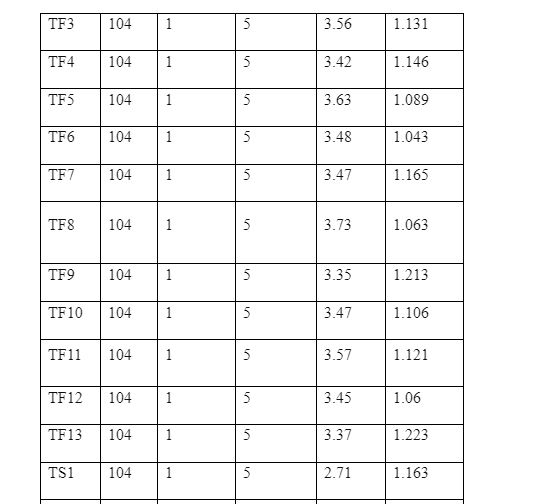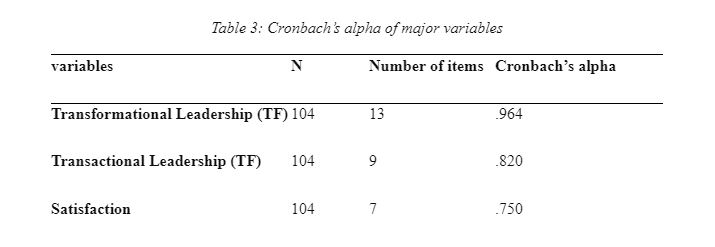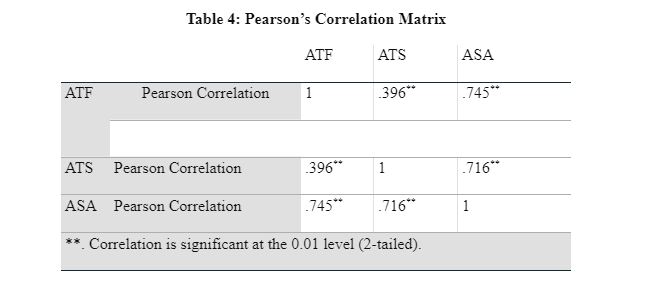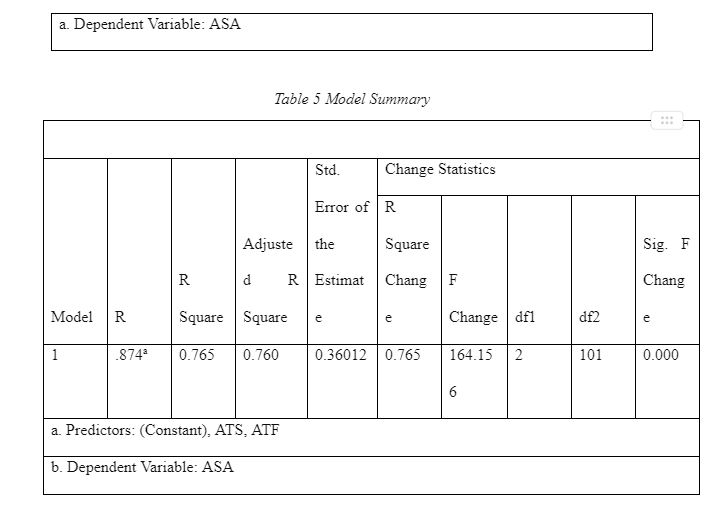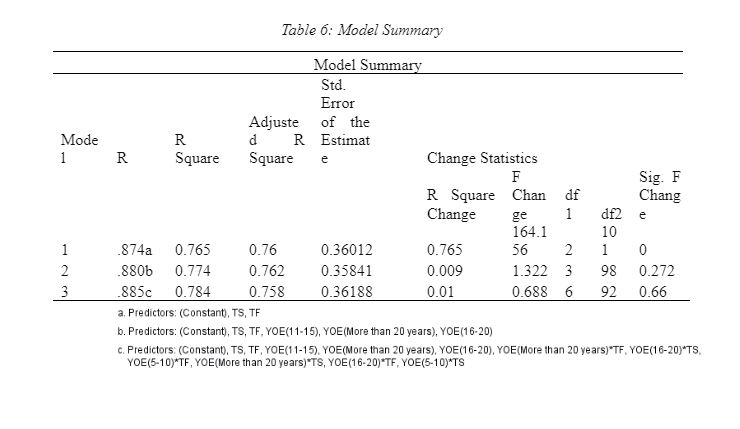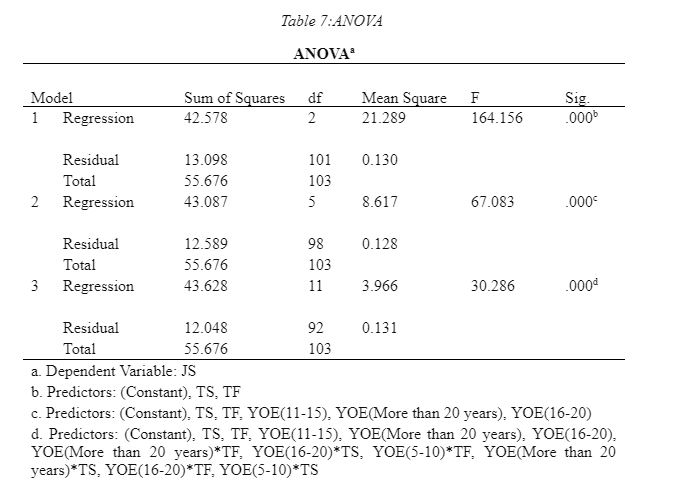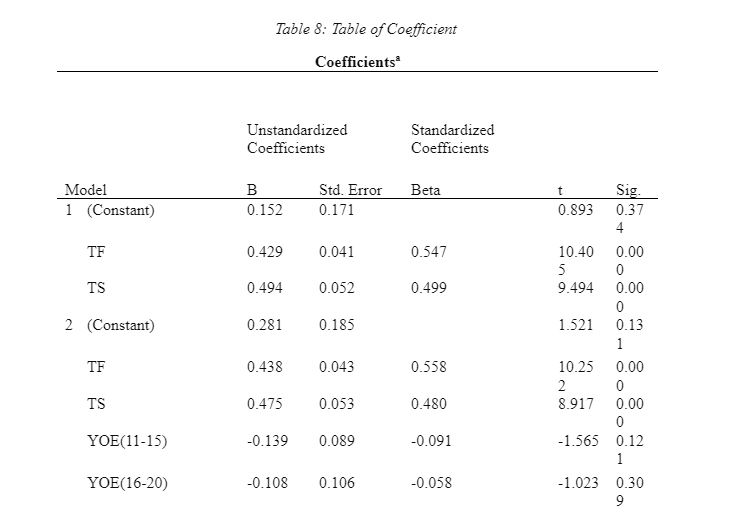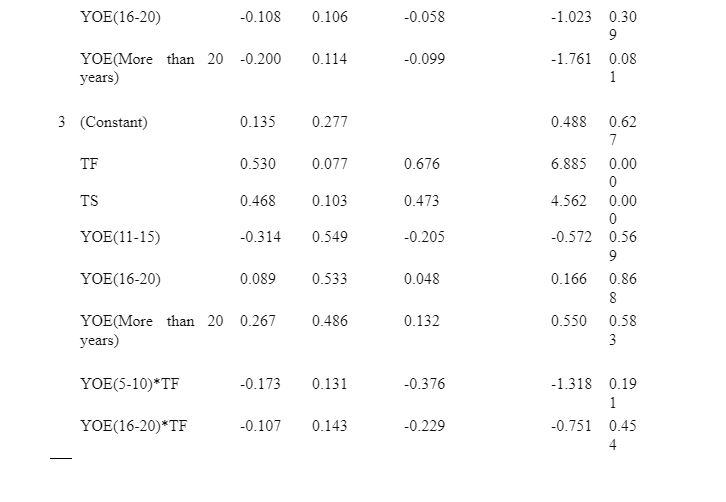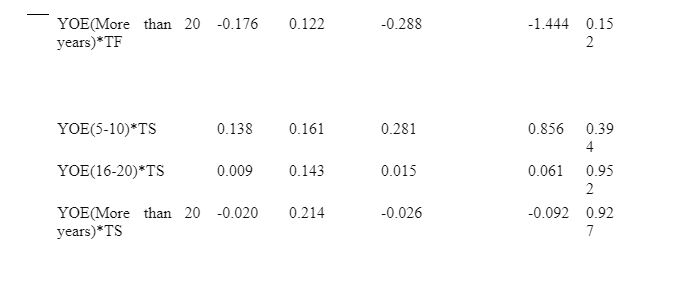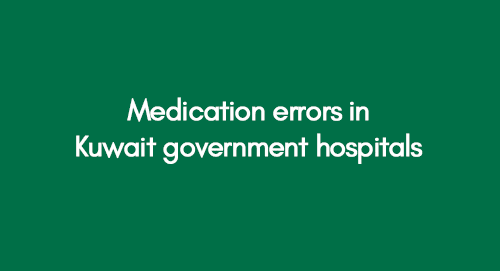
Exploring Medication Errors in Kuwait Government Hospitals: Identifying Challenges and Proposing Solutions
June 4, 2022
Analysis of the Factors Affecting the Choice of Psychiatry as a Medical Specialty
June 5, 2022Investigating how different leadership styles influence nurses' job satisfaction. Understanding the correlation between leadership approaches and nurses' contentment in their roles. With the increased significance of leadership in attaining successful outcomes in business, healthcare sectors have also started to consider the impact of leadership styles on the job satisfaction of nurses.
CHAPTER 1: RESEARCH BACKGROUND
While this study targets Qatar as the area of study, the healthcare sector in Qatar is booming, especially with the Qatar National Vision 2030, and it was ranked among the top five in the world and the first in the Middle East (Gulf Times,2019). Healthcare spending in Qatar is the highest in the region.
Significant Learning Experience in Healthcare
Moreover, Hamad Medical Corporation (HMC), the premier non-profit healthcare provider representing approximately 80% of the healthcare industry in Qatar, opened six new hospitals in 2018, the most significant expansion in the HMC's history. Therefore, the demand for healthcare professionals, especially nurses, is increasing tremendously and there are more than 16,000 nurses in Qatar of over 48 nationalities. The nursing profession is one of the utmost healthcare professions that have a great impact on the healthcare system.
Nurses constitute the largest number in the healthcare industry and have great potential to transform and change the healthcare system (Institute of Medicine, 2011). In Qatar, expatriates represent approximately 85% of the population. This multicultural environment makes it very challenging to maintain the quality of service provided. In this context, the impact of leadership styles on the job satisfaction of nurses could be considered positive, while leadership is also vital in enhancing the healthcare system and maintaining efficacy and efficiency. A leader with good leadership skills and qualities can directly improve the functioning of an entire organization.
The general objective of this study is to examine the impact of leadership and its relationship with job satisfaction. The leadership styles and leadership gaps in healthcare focused on transactional leadership and transformational leadership utilized by nurses in Qatar. The research findings can be employed to provide recommendations on leadership styles and skills that contribute to better satisfaction in the nursing field in Qatar.
Leadership Overview
Many researchers developed different theories on leadership, as each person leads differently than the other. This helped us classify and interpret those styles to identify and weigh each style and its contribution to job satisfaction. In 1939, Kurt Lewin defined 3 styles of leadership (Lewin et al., 1939);
1. In Authoritarian Leadership (Autocratic): These leaders provide a clear direction of what, when, and how things should be performed. This focuses on both giving orders and controlling. Usually, authoritarian leaders make decisions independently.
2. Participative or Democratic Leaders: These leaders encourage their followers to participate in the decision process. Moreover, this style contributed to higher productivity among groups.
3. Delegative or Free rein (Laissez-faire) Leaders: These leaders are very lenient and provide complete freedom in decision-making and problem-solving to their followers with little to no guidance from leaders.
In late 1970, Hersey and Blanchard developed slightly divergent versions of the Situational Leadership Theory: The Situational Leadership Model (Hersey) and the Situational Leadership II model (Blanchard et al. 1985).
4. Delegating Style: These leaders permit their followers to take the initiative and responsibility in decision-making as he is confident that their followers are competent and highly committed to work.
5. Supporting Style: These Leaders support their followers by checking the performed work to ensure it is well executed.
6. Coaching: These leaders help their followers develop their skills and progress to a higher level.
7. Directing: It is the basic level of leadership style primarily used with a new employee or with no previous experience employee. The leader follows and directs the tasks by providing clear instructions on the process. Moreover, the practice of leadership encourages positive results and recommends corrective actions for non-well-performed actions.
Most Accepted Leadership Styles
In 1985, Bass published “The Bass Handbook of Leadership, " highlighting transactional and transformational leadership.
- Transactional Leadership: these leaders evaluate their followers' performance and encourage them through both rewards and punishments.
- Transformational Leaders: these leaders are long-term oriented. They motivate and inspire their followers.
In this thesis, we will choose both transformational and transactional leadership and test the impact of these leadership styles on the job satisfaction of nurses, especially in healthcare facilities.
Problem Statement
Firms must possess excellent leadership traits to achieve their goals and motivate each employee within the firm at any level. This will lead to the success of the overall organization. The healthcare sector in Qatar witnessed remarkable growth in the region. Consistency in leadership is essential to keep the desired objectives and continue being among the top in the world. Job Satisfaction is highly linked to the leadership style exerted by managers. Management with ineffective leadership behaviour will create a toxic, destructive, malicious, and harmful effect on the employees and the overall organization. (Singh et al. 2019).
Therefore, having a diverse workforce environment, especially in the Nursing field, makes it very challenging to lead. The managers should develop a leadership strategy to manage the staff, improve the performance of the operations, and achieve organizational goals by keeping the staff satisfied and motivated. Very few researches in Qatar deepened nurse managers’ leadership styles and employees’ job satisfaction. The evaluation of the leadership styles in this study is built from the literature review.
Purpose of the Research
This research aims to look into the relationship between leadership style (transactional and transformational) on the job satisfaction of nurses in the healthcare industry in Qatar. Moreover, the research will test whether years of experience can impact nurses’ job satisfaction. This will help us to assess which leadership style contributes to better job satisfaction and the impact of the experience.
Transactional leadership is based on good relationships, using positive feedback or praise and negative or reprimand. Transformational leadership is the transforming leader, eminently a supporter of change, subordinates, aspirations, ideals, motivations, and values. It is essential to analyze how the leadership and the relationship that exists between the leader and his collaborators, reviewing antecedents, characteristics, and theories of leadership; as the objectives of this article will seek to understand the degrees of conformity that people feel based on the influence of the leaders (Quinn & Spreitzer, 2005).
Leader behaviours generate mechanisms of motivation that affect their followers' behaviour working in the same organization. Job satisfaction, over time, has escalated in the pyramid list of employees' priorities, as it is an essential factor in the quality of life and development of individuals in their professional lives (Peiro & Gonzales-Roma, 2003). The first phase of this paper seeks to conceptualize the impact of leadership styles on the job satisfaction of nurses. We will review various investigations that have been carried out and how employees perceive it within organizations.
Explore the Impact of Organisational Support on the Psychological Well-being of Employees
The research will aim to analyze how the characteristics of a leader, i.e., transactional and transformational in the field of nursing can reach the goal of job satisfaction for nurses. This study will also explain the concepts proposed by different authors while understanding the importance of leadership and job satisfaction. Afterwards, a survey method will be used and distributed to nurses working in Qatar hospitals.
The analysis of data and the results collected from the study will assess the Leadership style exerted by the nurse supervisors/managers in the healthcare facilities in Qatar and explore how to adopt the use of transformational/transactional leadership in the context of staff job satisfaction.
Research Questions
- Which leadership style contributes to a higher level of satisfaction among nurses?
- Does years of experience influence the moderator of the leadership style and its effect on nurses’ job satisfaction?
Research Model
CHAPTER 2: LITERATURE REVIEW
Good leaders are an asset to any organization and tend to motivate and provide direction to their staff. Therefore, good leaders can achieve organizational objectives. The healthcare setting is not different from any other industry. Studies have shown how highly effective leadership relates to healthcare providers and their job satisfaction.
Job satisfaction of nurses is crucial since the nursing profession significantly impacts the healthcare system. It is one of the utmost professions that significantly impact the healthcare system as they constitute the largest number in the healthcare industry (Institute of Medicine, 2011). This literature review aims to elaborate deeply on the leadership style and its influence on the job satisfaction of nurses in healthcare settings. In this study, however, only two different leadership styles will be assessed; the first is transformational, and the second is transactional.
Moreover, this thesis will consider the years of experience as a moderator variable to examine if it influences job satisfaction. A healthcare setting was adopted with a focus on nurses, as they deal with human life regularly. Therefore, we need to keep healthcare professionals motivated and satisfied with their jobs to provide the best quality of service and subsequently improve the patient's health.
It is necessary to analyze the effects of leadership, its influence on perceptions, and how they affect the job satisfaction perceived by employees. More explicitly, we try to find out how significant the relationship between leadership styles (transactional and transformational) and nurse satisfaction is.
Leadership Styles
The term "leader" was recognized as early as the 1300s; however, scientific research began to develop in the middle of the 20th century. Many research lines, the main objective of which was to find out the typical behaviours of the leaders and try to relate these behaviours to the performance of the group and the satisfaction of its members. In all of them, the leader's behaviour could be summarized, although with different names according to the model or the theory in which they are included.
In two dimensions or styles of leadership: orientation to the task where the leader is mainly concerned with achieving the group objectives and orientation to the relationship where the leader is interested in the welfare and satisfaction of the followers. A relationship has also been found between the leader's reward behaviour and job satisfaction (King, 1990). Bass (1985) rescues certain traits exercised by the leaders that generate awareness of the importance and values achieved after obtaining the results when performing the assigned tasks. Thus, for Bass & Riggio (2006), some features of leadership styles related to values can be highlighted:
Transactional
The Transactional Leadership dimension includes the behaviours associated with supervision that can be assimilated into Situational Leadership or Contingent Leadership models. Bass describes two levels of transactional leadership (Northouse, 2010):
- Active Exception Management alludes to the implementation of periodic performance management procedures aimed at preventing problems and increasing the performance of subordinates by watching them closely.
- Passive Exception Management, on the other hand, implies only the response to breaks in the processes where the standards or objectives are not met.
Transaction leadership focuses on achieving organizational objectives and goals and uses negotiation with subordinates and rewards. Leaders with this style tend to closely monitor their team's tasks to avoid mistakes and be proactive and reactive when errors arise. Moreover, with transactional leadership, the leader provides comprehensive instruction on the job role and helps them achieve the company goals. Consequently, rewards or reprimands will be provided based on the results.
Although transactional leadership helps leaders achieve organizational goals and increase competitiveness, this leadership style tends to have some downsides as it might cause demotivation of the employees or to perform outside their duties or think outside of the box. Moura et al. (2017) conducted an in-depth review of related articles from 2011 to 2016, and the data showed a significant relationship between transactional leadership and job satisfaction. From this, the first hypothesis of this study is (H1):
- H1. The transactional leadership style has an impact on nursing job satisfaction.
The study's first hypothesis demonstrates that transactional leadership directly influences the level of satisfaction among nurses. Transaction management is based on good relationships, positive feedback or praise, and negative or frightening. The meta-analysis conducted by Dumdum, Lowe, and Avolio (2013) compiles studies on the relationship between transformational and transactional leadership styles with satisfaction finding significant and moderately strong correlations.
The correlation between the dimensions of consideration and structure with employee satisfaction is observed, all being significant. It is observed that leadership exerts a significant effect on job satisfaction and must meet the needs of the moment and evaluate which style is the most effective for that particular situation. Leadership styles and job satisfaction could be used as standards to guide administrators towards a better understanding of people's needs and towards more realistic ways of improving the quality of life at work and solving various employees’ problems related to job satisfaction and the leadership style of the manager.
Transformational
Transformational leadership was developed in the 1980s. Many studies demonstrate that this leadership style is the most preferred among employees in many industries. Transformational leadership tends to motivate the employees, create and increase awareness of main issues, increase the need for self-actualization, and surpass their interests to the best of the organization. Moreover, this type of leadership empowers the employees to become transformational leaders (Bass, 1995).
A transformational leader provides a vision for the future and promotes a common mission. It is based on a high ethical and moral standard that promotes problem-solving intelligently and rationally. The main challenge of a transformational leader is to motivate their followers, help them achieve more than expected, and contribute to organizational growth (J. Arenas 2019). This type of leadership has four transformational behaviours:
- Idealized influence: The leader is a role model to all his subordinates. Therefore, they are respected, admired, and trusted in the company. This type of leadership processes high ethics and morals
- Inspirational Motivation: It develops motivation and teamwork among the team. The level of productivity is higher than expected.
- Intellectual stimulation: Leaders encourage their followers to be more creative and innovative. This will help to develop a new approach to problem-solving that is efficient.
- Individualized consideration: The leader coach, and mentor depend on the needs of each member of the team since the requirements might differ from one individual to another.
Alzahrani and Hasan (2019) conducted a systematic review on the impact of transformational leadership style on the job satisfaction of nurses, especially since the nursing shortage is a common problem in Saudi Arabia. Understanding the factors that contribute to better satisfaction is essential to make the profession of nursing attractive. Therefore, nurse managers should improve their leadership skills to provide a better working environment for the staff. Nassem et al. (2018) conducted a cross-case study in public hospitals in Lahore.
The results revealed that transformational leadership tends to be very effective in promoting nurses' job satisfaction and increasing job performance which enhances patient satisfaction. Alshahrani et al. (2016) studied the effect of transactional and transformational leadership styles on nurses’ job satisfaction in Saudi Arabia, resulting in higher nurses’. Therefore the second hypothesis of this study is (H2):
- H2. The Transformational leadership style has an impact on the job satisfaction of nurses.
The study's second hypothesis emphasizes the association between job satisfaction and transformational leadership. Transformational leadership is part of the paradigm called new leadership, as provided by Bass and Avolio (1993), which has evolved since the 1980s, with special emphasis on emotional and charismatic aspects. In particular, transformational leadership is a process that changes and transforms individuals based on the leader's emotions, values, morals, quality, and long-term goals.
For their part, Seidman and Mc Cauley (2011) consider that one of the fundamental characteristics of this is to promote the development of competencies within the organization, where their contribution contributes to significant progress and effort; They motivate and inspire to change the perspective of their collaborators. When it comes to leadership, transformational leadership demonstrates a higher satisfaction level when it is compared to transactional styles of leadership. It points to how the leader has the purpose of generating a positive impact on the performance of the collaborators of a company, being human capital the engine that promotes the organization towards growth (Dumdum, Lowe and Avolio, 2013).
Arisa and Syah (2018) conducted a study to test the transformational leadership style of nurse managers and its influence on the level of satisfaction among staff nurses. Results revealed that transformational leadership increases significant job satisfaction, and leaders who care for and help their staff attribute, thereby, increasing the level of satisfaction. Depending on the level of satisfaction, this may affect the quality and quantity of work, as well as the increase in staff turnover, absenteeism, or poor quality of work.
Job Satisfaction
In general, organizations want their employees to be motivated, actively participate in the work done, and feel valued for their contributions, especially in the nursing field, since the nurses are contributing to enhancing the patient's health. When a collaborator perceives high standards of dissatisfaction decreases their performance in the work entrusted, which has been analyzed in various investigations creating theories relating to the effects of this dissatisfaction.
The authors Chiang, Méndez & Sanchez (2010) indicated that it is essential to realize how important it is to value satisfaction in human beings since this is a feeling, either of pleasure or pain, and that is different from what thought or behavioural intentions. It is essential to consider that these factors affect the proper management of the organizations so that they understand the reactions of their collaborators to the work carried out.
Therefore, analysing the needs of subordinates, and using good leadership, should obtain optimal employee satisfaction in organizations. The talents, qualities, and knowledge of a person who has the vision and perspective to motivate the people under their command and to carry out specific activities within the company chosen based on their ability, knowledge, and skills, result in excellent work, in which three psychological needs: autonomy, competence, and link.
This demonstrates how the satisfaction of these needs is directly related to intrinsic motivation and, therefore, to greater satisfaction and labour productivity. Rowe (2001) highlighted that in the symbiosis generated between the leader and subordinates that is the trust, amalgamated by fair remuneration, creates creativity and helps in the fulfilment of the goals and objectives of the company, thereby, building a collective human capital, which is guided by the leader in the function or goals.
The commitment weight performance is much more important when understanding the elements that facilitate an employee's involvement (Perez et al., 2013). This connection between the leader and subordinates working perfectly with clear goals, motivation, and training, creates an environment of satisfaction at work. Human resources have become a strategic asset of the first order since they depend on the knowledge and creativity necessary to promote innovations and increase productivity.
Studies reveal that Leadership Styles in creating a better work environment for nurses lead to improving patient outcomes (Adams et al. 2018). Perez (2014) carried out a study whose objective was to determine the relationship between leadership and job satisfaction of nursing professionals. This study was conducted on a sample of 32 nurse managers, using the Multifactor Leadership Questionnaire, reaching the conclusion that all the surveyed professionals have leadership skills. In terms of job satisfaction, transformational leadership was found to have a high level of satisfaction.
The author Perez (2014) set the objective to know the performance of the nursing leaders, the motivation of the personnel they oversee, and the satisfaction of the users for the service they receive. Unfortunately, few studies deepened the topic of transactional or transformational leadership quality. However, there are no recipes for a good performance, since even with experience, the leader cannot anticipate the problems that will arise daily. The authors Gonzalez Alvarez, et al., (2013) carried out the study "Relationship of Labor Satisfaction with Leadership Styles in Nurses of Public Hospitals of Santiago," which aimed to determine whether the job satisfaction perceived by nursing professionals is related to the leadership styles of the Hersey and Blanchard model.
Review the following:
A quantitative, cross-sectional, descriptive, correlational study had 214 nurses, using a questionnaire on Labor Satisfaction and Leadership Styles as instruments. The results show that there’s no Leadership style better than the other that affects job satisfaction among nurses. Nurse managers can influence the job satisfaction of nursing staff by exercising a leadership style appropriate to the situation, thereby increasing their staff's motivation and job satisfaction.
Therefore, nurses should be close so that the change process is facilitated, as well as the scope of the service that the clients need. This fact may be linked to the lack of emphasis given to the acquisition of this knowledge, since the development of leadership must begin at the basic level, together with research activities and clinical / community experience (Robles et al., 2005). It is possible to reinforce it through continuing education and perfect it in the master's and doctorate programs, where many leaders flourish fully in all nursing domains: practice, education, administration, and research (Morsiani, Bagnasco, and Sasso, 2017).
The American Organization of Nurse Executives (AONE) recognizes leadership as an essential competency in the administration of nurses due to their active participation in public policies, health programs, allocation of resources, analysis of information, and direction of working groups (Waxman et al., 2017).
Nurses Leadership
In turn, the Institute of Medicine (US) supported the ideology that leadership is essential to achieve the objectives related to the quality of care and safety of patients. At the same time, it points to transformational leadership, centred on the quality of care, as a necessary element for nurses to face the deficiencies of the work environment. On the other hand, the World Health Organization points out that it is a challenge to maintain competent professionals because nurses who occupy leadership positions must be able to influence the decision-making mechanisms and therefore establish priorities and allocate resources for obtaining health.
Assessing Emotional Intelligence and Leadership
In hospital institutions, as supervisors, nursing professionals need preparation to assume leadership roles, a necessary condition required to generate changes in their daily practice, guarantee the quality of care, and reconcile the institutional objectives with the needs of the nursing team. Together, leadership is considered an essential factor that affects the job satisfaction of nurses and contributes to a higher level of job performance. (Naseem, et al., 2018). The current trend in leadership indicates that this is considered an essential and inherent factor in all organizational theories. However, for nursing, leadership is basic competence in the organizational structure of health institutions.
Leadership is considered necessary to build efficient and competitive institutions, with human resources prepared in managerial skills, further promoting social and culture-related relations, communication, and the community. At the same time, it generates analysis processes and the possibility of change in organizations to achieve a better quality of patient care, impact on the work environment, and staff welfare.
The authors Lorber, Treven, and Mumel (2016) discussed in their study that nursing professionals have emerged as leaders of the health team due to their training and professional development with specific personal attributes that articulate knowledge and actions necessary to offer creative and quality assistance. Besides, it must have the capacity to generate, develop, promote and evaluate processes of transformation in health services and professional education towards universal coverage and the renewal of primary health care to the highest quality of care.
In turn, we must highlight the moral sense of the leadership practised by professionals, which responds to and accounts for the social commitment of communities. According to Konstantinou and Prezerakos (2018), "Leadership plays a fundamental role in the lives of nurses" and "Nursing requires strong, coherent and well-informed leaders." However, despite numerous studies that have analyzed and explained the research subject, there is no available evidence on a definitive and effective theory that guides leaders.
Diversity and Experience Impact Job Satisfaction
A multicultural working environment accommodates and incorporates the different employees’ ideas and beliefs. Each employee possibly has a diverse social and cultural background (Rozkwitalska and Basinska, 2015). A competent leader must put all these factors in place when choosing a leadership style; it must be kept in mind to be just and fair to all employees.
Nursing brings together individuals from different backgrounds and experience levels. This creates a cultural pool whereby different individuals exchange their experiences. This form of cultural exchange serves to enlighten others and develop an understanding of one another hence improving relations that result in job satisfaction among the nurses (Rittle, 2015).
A wise leader understands and acknowledges those facts and employs a strategy to put everyone in a unified work environment so they feel appreciated when others genuinely understand them. Nursing is an extensive career that has nurses coming in from different backgrounds. The diverse backgrounds imply that there is a vast information base among the nurses. Different cultures have different ways of doing things compared to how others get it done.
A nurse could have a medical practice that other nurses are unaware of and teach them in the long run. Information is shared much more quickly this way. Employees feel noticed, appreciated, and even considered whenever they are allowed to take part in matters that are not work-related. A vast information pool is created when nurses from different countries work together toward similar goals. They work hand in hand with each other and assist whenever possible, and in the long run, the enhanced teamwork results in job satisfaction for all employees (Jacobs, 2015).
According to Koopmans 2018, experience is a positive driver in improving the quality of nursing care and job satisfaction. It will enhance communication and teamwork with optimal staff and skill mix. The work gets evenly distributed according to individual competence and area of expertise. Nurses come from various places and countries with different practices; therefore, they should be given work according to their qualifications to relate to the assigned tasks. There are no exceptional employees, but each employee has unique jobs to undertake. Higher qualified or experienced nurses can educate existing personnel, increase problem-solving, and enhance job satisfaction. Therefore, it was hypothesized the following:
- H3: The years of experience have a moderate influence on the relationship between leadership style and job satisfaction of nurses.'
Considering the psychological, social, cultural, and biological aspects, nurses are responsible for providing comprehensive and quality care to modify the conception focused on health care and assume leadership. Under leadership, nurses must develop a "comprehensive, generating a favourable, participatory work climate, fostering teamwork, involving its staff in decisions" (Sukumarakurup, Houghton, Neck & Ellison, 2015).
Teaching nurses must be clear about leadership and master the practices that promote their development because experience has shown that this notion has different connotations for the same teachers. This requires flexibility in applying leadership and management skills, which are directly related to teamwork, decision-making, and planning, which use different leadership styles, depending on the situation that arises and as necessary (Saleh et al., 2018).
With this aspect, leadership may influence the nurses to start motivating health team behaviours and behaviours toward humanized and quality management practices. Therefore, nursing professionals are responsible for directing the road to change, considering the significant problems, and identifying the strategies required to exercise all their leadership potential. However, the study's results showed substantial differences in leadership style perceptions between the managers and staff, influencing declining satisfaction. (Andrews et al., 2012).
Moreover, implying leadership not only influences patients' care but also affects the administration, education, decisions, and autonomy of peers while promoting an area's overall population's health and life conditions. The achievement of care objectives specific to the profession and the achievement of the goals proposed in the health services could be possible through leadership. Therefore, imposing leadership could be considered a process, favouring social, professional, and organizational development. The magnitude of this process covers all areas of management in nursing, whether they are performing care functions, being in charge of a group of paramedical technicians, administering a service, or participating in the training of new professionals (Higgins, 2015).
A leader must approach a particular style to stand out when performing his function, according to the model of Blanchard and Herse. Based on this aspect, a leader's effectiveness could be determined in terms of their ability to use each of the styles according to the situation of the collaborators. No leadership style is always suitable for all situations. Therefore, the most influential leader will be one who demonstrates greater style flexibility and uses the right style with the right person. The Hersey and Blanchard model has helped professionals and consultants worldwide pay more attention to the concept of "situation" (Gonzalez Alvarez et al., 2013).
Nursing professionals may strongly agree that their perception of job satisfaction correlates with the delegating and directing styles, respectively. In contrast, the perception of the "quite satisfied" level correlates with participative and coaching styles. These results are supported by various research, such as those conducted by the universities of Ohio and Michigan. These studies showed that leaders who adopt coaching and participative styles tend to achieve better performance and satisfaction with their subordinates because they emphasize personal relationships, are particularly interested in their followers' needs, and accept the group's individualities (Gonzalez Alvarez et al., 2013). A crucial element of effective leadership is that leaders have the confidence of their workers (Omar, 2011).
Planning
In nursing, prevailing literature shows that transformational and transactional leadership influence the satisfaction level of employees or nurses with their respective jobs. Therefore, the skills of a leader tend to affect the performance of employees for the organization.
To achieve this goal, adequate planning must be carried out and managed in a synchronic and harmonious way, in such a manner that it correlates with the activities of the nurses and the departments they work in. Leadership impact human talent and business performance. It is a central axis in companies toward efficient performance and also points to coherence between the dimensions of the strategy, the structure, and the job satisfaction of the collaborators. This satisfaction compromises a high-performance level that implies and involves a productive attitude. Another important aspect that several authors mentioned is the close relationship with motivation, an internal factor that requires more attention. On the other hand, Kim (2013) explains that motivation comes from simple elements such as impulses, attributions, or information units under a complex action in the human being.
For Robbins (1998), he considers motivation "the willingness to practice a high level of effort towards business goals, conditioned by the ability to satisfy some individual need ". For Mendoza Martínez, Escobar Álvarez, and García Rivera (2012), leadership is considered an "essential element for the efficiency and development of the company, whereas its permanent presence allows the achievement of the mission and organizational goals". Leaders should be the core point between corporate culture, ethics, and work performance. This challenging organizational engine provides direction and maintains satisfaction that sustains the growth of employees within the organization.
The research mentioned in this literature review hypothesized that a positive association exists between job satisfaction and leadership styles, i.e., transactional and transformational styles. This literature review showed a relationship between transformation and transactional leadership styles and nurses’ satisfaction. Therefore, leadership style is a significant factor in promoting the better satisfaction of employees. Although the nature of Nurses' work, where they need to encounter several critical situations, is stressful, providing a happy work environment contributes to the job satisfaction of nurses and leads to better performance of the organization.
CHAPTER 3: RESEARCH METHODOLOGY
This research project aims to determine the impact of leadership styles on nurses’ job satisfaction in healthcare industries in Qatar.
Objectives of the Research
The methodology is directed and concentrated on the two research questions. First, to investigate which leadership style contributes to a higher level of satisfaction among nurses in Qatar and second, if there is a moderation impact of the “years of experience” on the relationships between the leadership styles and the nurse's job satisfaction.
The proposed research model concludes that transactional and transformational leadership styles influence nurses’ job satisfaction. As a result, the model consists of two variables as predictors for nurses’ job satisfaction. The variables are Transformation Leadership Style and Transaction Leadership Style. Moreover, the model considers the moderation effect of years of experience on the proposed relationships.
Research Instrument
A questionnaire was built and distributed to nurses working in hospitals in Qatar to assess their job satisfaction with their line manager leadership style.
A self-administered questionnaire was used to collect data, as shown in Appendix A. The online questionnaire is composed of three parts. The first part comprises questions related to demographics; the second part includes questions concerning the two independent variables, which are the transformational leadership style and the transactional leadership style exerted by their line manager, whereas the third part is associated with the impact of this leadership style on job satisfaction of nurses.
The responses for the questions were on a 5-point Likert scale (1= strongly disagree, 2= disagree, 3= Neutral, 4=agree, and 5=strongly agree), where respondents were asked to rate the level of their agreement with the various items. The third section of the questionnaire included questions about the dependent variable (Job Satisfaction). Respondents were also asked to rate their agreement level with the various items based on a five-point Likert scale.
The electronic version of the questionnaire was prepared in English and sent to nurses’ email through the hospital administration department. The purpose of the study was mentioned to the participants through the information sheet in the email. The participants were informed that their participation in the survey was entirely voluntary and anonymous, and they could withdraw from the questionnaire at any time. They were also informed about the required time to finish the questionnaire, around ten to fifteen minutes. Moreover, the participant's identity was not needed at any time in the study as it is intended to preserve confidentiality.
The subject will get to clear their concerns and queries with the principal investigator through the email or telephone number available in the information sheet. There is no risk associated with this study. A reminder was sent to the participants at an interval of 1 week to encourage their participation in the study. The survey was open for two weeks, and no further follow-up or contact was required with the participants.
This section will describe how the data collection and analysis were performed in this study.
Sample and Data Collection Procedure
A quantitative analysis was selected to examine the relationship between different variables for a large group of samples.
As the research tends to analyse the impact of leadership style on the job satisfaction of the nurses, A survey (Appendix) was designed to consider all the factors that need to be tested in this research, and it was used as primary data collection. Before distributing to the targeted hospitals, a Qatar University Institutional Review Board approval QU-IRB 1281-E/20 (Appendix) was obtained.
The survey questionnaire was used as the primary data collection. A questionnaire was designed based on the research question formulated in the study and distributed to a hospital in Qatar. A proportionate stratified random sampling method was used to collect the data. The database of the nurses working in a healthcare facility in Qatar was compiled from the workforce department. The sampling frame was prepared based on the nurses' database.
A total of 104 valid responses were used for data analysis. The data collection period was from April 9, 2020, to April 23, 2020. The data collected was extracted as an Excel sheet from the Google Forms platform and moved to SPSS for analysis.
Validity of the Questionnaire
The survey was reviewed and approved by the Qatar University Institutional Review Board Committee (QUIRB) and the hospital where the study was conducted. The approval is under IRB 1281-E/20 (Appendix), and the approval letter is listed in Appendix B. The purpose of the review is to ensure the validity and integrity of the questionnaire and that it complies with ethical practices.
Data Management and Analysis
The data will be collected using online survey software, which is Google Forms and will be transferred to an Excel sheet given the research study design and objectives. The responses of the participants will be recorded in the survey software. Final data will be accessible by the Principal Investigator and biostatistician for statistical analysis and final report preparation. The study's primary aim is to identify the effect of transactional and transformational leadership styles on the job satisfaction of nurses in Qatar. The participant’s answers will be analyzed using a five-point Likert scale.
Numerous statistical techniques were used to analyze the data and test the hypothesis. The internal consistency was assessed by a reliability analysis using Cronbach’s Alpha of the items of each variable. Descriptive statistics were used to summarize the data regarding demographic details, educational details, and clinical experience and to evaluate the mean and standard deviation of the study variables and items.
The study's primary outcome is to determine the effect of transformational and transactional leadership styles on a nurse's job satisfaction based on the responses to 29 questions. Furthermore, the linearity of the variable was assessed by the Correlation coefficient. On the other hand, regression analysis was performed to investigate the impact of the independent variables on the dependent variable and test the moderation effect of the moderator variable.
CHAPTER 4: DATA ANALYSIS
Review the sample demographics of the study.
Sample Demographics
The questionnaire was distributed to 4 groups of nurses working in a healthcare facility in Qatar: Staff Nurse, Charge Nurse, Head Nurse, and Director of Nursing to assess the leadership styles and the impact on job satisfaction. The number of participants who participated in the research is 104 (n=104), 51% female and 49% male. The majority of Qatar University are Arabs 75%, Asians 14%, western 10%, Africans 3%, and Qatari 2%.
In terms of the level of education, 63.5% hold a Bachelor of Science in Nursing, 19.2% a Master's degree, a diploma 12.5%, and 4.8% other qualifications. 50% of the nurse's ages range between 36 and 45 years old, 35.6% between 25 and 35 years old, 11.5% between 46 and 55 years old, and 2.9% above 56 years old. Regarding years of experience, 35.6% have between 11-15 years, 29.8% between 5 to 10 years, 19.2% 16-20 years, and 15.4% more than 20 years of experience. 62.5% of the participants are staff nurses, 18.3 of the participant’s head nurses, 15.4 charge nurses, and 3.8% are directors of nursing.
Descriptive Analysis
The second part of the questionnaire (questions 1 -29) targeted the research question to identify the leadership style contributing to higher staff job satisfaction. A descriptive analysis was done to evaluate the items’ means and standard deviations of the Likert Scale to check how respondents perceived them. The results are listed in Table 2. Items codes and statements are listed in the questionnaire in Appendix A. A 5-point Likert scale was used in the questionnaire. The mean is classified into the following five levels:
- 4.51-5.00 means the highest degree of agreement with the statement
- 3.51-4.50 means a high degree of agreement with the statement
- 2.51 -3.50 means the medium degree of agreement with the statement
- 1.51-2.50 means a low degree of agreement with the statement
- 1.00-1.50 means the lowest degree of agreement with the statement
For the Transformational Leadership Style Variable (TF), 6 items mean are highly perceived (3.51-4.50), which indicates a high degree of agreement with the statement, and 7 items mean are moderately perceived (2.51-3.5), which indicates a moderate agreement with the statement. For the Transactional Leadership Style Variable (TS), All 9 items mean moderately perceived (2.51-3.5), indicating moderate agreement with the statement. For the Satisfaction Variable (SA), only 1 item mean is highly perceived (3.51-4.50), which indicates a high degree of agreement with the statement, and 6 items mean are moderately perceived (2.51-3.5), which indicates a moderate agreement with the statement.
Reliability and Validity
A Reliability Analysis was conducted using Cronbach's alpha, a calculation of the correlations between the variable items, to test the internal consistency of the variables in this report. While Cronbach's recommended alpha value is above 0.8, values above 0.6 are considered appropriate (Hair, Anderson, Babin, & Black, 2010). The Cronbach's alpha values for each variable are shown below
A correlation test was performed between the study variables to verify their linear relationship and multicollinearity.
Correlation
Table 4 shows the findings of the Pearson Correlation Index. Concerning the findings of Schober (2018), the Pearson Correlation value ranges between 0 to 1. More specifically, it is discussed that when the Pearson Correlation value appears within the range of 0.1 to 0.3, then it can be stated that a weak association exists between the variables. Moreover, when this value appears within the range of 0.3 to 0.7, it can be noted that a moderately strong association exists between the variables. However, when this value falls within the range of 0.7 to 0.1, it can be suggested that a strong association exists between the variables. In the table (Table 4), the Pearson Correlation value for transformational leadership about job satisfaction appears at 0.745.
Since the computed value has fallen within the substantial correlation range, it can be stated that transformational leadership is strongly associated with the nurse’s job satisfaction. In terms of transactional leadership and job satisfaction, the Pearson Correlation value appeared as 0.716. As the obtained value also falls in the range of strong association, it can be stated that transactional leadership is strongly associated with the nurse’s job satisfaction.
Regression Analysis and Hypothesis Testing
Multiple regression was performed twice to test the model and the proposed hypotheses. The first execution is to test the model without the moderator to answer the main research question. For the model, without the moderator, the first execution was to answer the first research query. The second execution was for the model with the moderator variable, which aims to answer the second research question.
Regression Analysis for the Model without the Moderation Effect
The results of the first regression execution for the model without the moderator are shown in Table 4 and Table 5. Results show that the prediction of nurse satisfaction is significant and resulted in an R² = 0.765 (Adjusted R² = 0.760) with an F = 164.156 and a p<0.001. This implies that the overall model is significant. Concerning the findings of Hahne (2014), the R-square value suggests the e2Qxtent of the independent variable predicts the dependent variable.
In Table 5, the R² value of 0.765 indicates that 76.5 % of the dependent variable, i.e. nurses’ job satisfaction, is predicted by independent variables transformational leadership and transactional leadership. Results also indicate that the two variables are significant predictors of the nurses’ satisfaction. The strongest predictor is transformational leadership (ATF, beta = 0.547, p < 0.001), followed by the transactional leadership predictor (ATS, beta = 0.494, p < 0.001). The overall multiple regression equation:
PI = 0.152+ 0.429 ATF + 0.494 ATS + e
Concerning Table 4, the sig value of the independent variables is important. In light of the findings of McShane (2019), the sig value or p-value has a threshold of 0.05. This suggests that to claim the independent variable's significant impact on the dependent variable, the sig value must be less than 0.05. In Table 4, the sig-value for transformational leadership has been obtained as 0.000.
As the obtained value is less than 0.05 therefore, it can be suggested that transformational leadership has a significant impact on the job satisfaction of nurses. Further, the sig value for the transactional leadership style was 0.000. As this value has also appeared as lesser than the threshold of 0.05, it can be suggested that transactional leadership style also significantly impacts the job satisfaction of nurses.
Therefore, the study’s hypotheses H1 and H2 are supported by those results, as shown in Table 4. The first study, hypothesis H1, shows that Transformational leadership style positively impacts nurse satisfaction. This result is proved in previous studies as well. The second hypothesis, H2, demonstrates that The Transactional leadership style has a positive relationship with Nurse satisfaction, supported by the previous studies. This indicates that both leadership styles positively impact nurses’ job satisfaction.
Regression Analysis for the Model with the Moderation Effect
To determine the moderation effect of years of experience in the relationship between transactional leadership style and job satisfaction, transformational leadership style, and job satisfaction, the researcher has developed three main regression models. The first model is concerned with determining the direct effect of independent variables on the dependent variable. The second regression model has been developed, highlighting the direct effect of the moderator on the dependent variable. At the same time, the third regression model concerns the combined effect of the moderator and the independent variable.
Table 4, mentioned above, is the model summary that highlights the characteristics of the developed model. In the table above, the two values are essential to consider. These values are considered as R-value and R-square. As already discussed, the fundamental model developed in determining the moderating effect was concerned with determining the direct effect of independent variables on the dependent variable. For this case, the value of R has been obtained as 0.874.
This suggests that 87.4 % of this model is appropriate for the regression analysis. Further, the R-square value for this model has been obtained as 0.765. This obtained value suggests that 76.5% of the dependent variable, i.e. job satisfaction, is predicted by the independent variables transactional leadership and transformational leadership. This indicates that the developed regression model for determining the direct effect of the independent variable on the dependent variable is appropriate and fits.
Another regression model was developed to determine the moderator's direct effect, i.e. years of experience, on the dependent variable job satisfaction. The R-value for this model has been computed as 0.880. The obtained R-value suggests that 88% of the developed model is fit and adequate for analysis. Moreover, the R-square value for this has been obtained as 0.774. This concludes that the moderator predicted 77.4 % of job satisfaction, i.e. years of experience.
Thirdly, another essential regression model was developed to examine whether the moderator moderates the relationship between the dependent and independent variables. For this specific model, the value of R has been computed as 0.885. This suggests that 88.5% of the developed regression is fit and adequate. In addition, the R-square value for this model has been calculated as 0.784. From this aspect, it can be suggested that the moderating effect of the moderator predicts 78.4 % of the dependent variable, i.e. job satisfaction.
The table above (Table 6) is the ANOVA, whose primary purpose is to also determine the significance of the developed regression models. Here it becomes necessary to mention that the same sig value is referred to for determining the significance of the model. In the case of regression model 1, the sig value has been computed as 0.000.
This suggests that the developed regression model is fit and appropriate for the analysis. In regression model 2, the sig value also appeared as 0.000. This also indicates that the model is significant and suitable for regression analysis. In the case of regression model 3, the sig value has also appeared as lesser than 0.000. This suggests that this developed regression model 3 is also fit and appropriate to execute the regression analysis.
In the table above (Table 6) moderating effect has been highlighted. The sig value with the threshold of 0.05 is used to determine whether the impact is significant or insignificant. From the table mentioned above, it can be observed that there is transformational leadership has a significant effect on job satisfaction. Moreover, transactional leadership also has a substantial impact on job satisfaction. It has been due to the sig value that appears less than the threshold of 0.05. Moreover, it can also be confirmed from table 5, where it has also been found that transactional and transformational leadership significantly impact job satisfaction.
In the case of regression model 2, where the predictors were the independent variables and the moderating variable, the independent variables significantly impact job satisfaction. However, the moderating variables comprising different ages do not considerably affect the dependent variable. Lastly, in the case of regression model 3, where the moderating effect has been computed, it can be observed that YOE (5-10), YOE (16-20), and YOE (More than 20 years) do not significantly show a moderate relationship between transformational leadership and job satisfaction. It has been because of the sig values of 0.191, 0.454, and 0.152 that have been computed for YOE (5-10) *TF, YOE (16-20) *TF, and YOE (More than 20 years) *TF, respectively.
Moreover, in the case of transactional leadership, it has also been found that years of experience do not moderate the relationship between transactional leadership and job satisfaction. It is based on the sig value that has appeared as 0.394, 0.952, and 0.927 for YOE (5-10) *TS, YOE (16-20) *TS, and YOE (More than 20 years) *TS. Hence, it is confirmed that years of experience also do not significantly moderate the relationship between transactional leadership and job satisfaction.
Summary
This research features two main research questions. The first research question investigated leadership style and its impact on nurses’ job satisfaction. From the analysis of this study and the discussed previous studies, it has been found that transactional leadership and transformational leadership significantly impact the job satisfaction of nurses.
The second research question aimed to investigate if years of experience moderate the relationships between the suggested factors and nurses' job satisfaction. The analysis concluded that the years of experience do not affect any proposed relationships. Thus, there is no moderation effect.
CHAPTER 5: CONCLUSION, LIMITATIONS, AND FUTURE WORK
This study has focused on the two leadership styles, i.e. transformational and transactional.
Conclusion
In this study, the impact of these leadership styles has been studied on the satisfaction level of the nursing profession. In this study, quantitative measures were taken where the researcher collected the quantitative data from the nurses, who were asked about their managers and leadership styles.
However, the questions in the questionnaire were not directly asked about the managers' leadership style. Still, the questionnaire was developed with the support of various studies by analyzing the factors of leadership styles separately. Results of the study have shown a significant impact of the transactional and transformational leadership styles when discussing the level of job satisfaction in the profession of nurses. Therefore, in such a case where the transformational and transactional leadership styles have a tremendous influence level among the nurses, it becomes clear that there various elements of these leadership styles are also essential to be focused on by the managers.
Based on the study's results, it can be concluded that managers significantly influence their subordinates. When they encourage them on their performance, it increases their level of motivation. Therefore, in such a case, where the manager would be focused on encouraging their subordinates, there are chances that this will initiate the element of self-development among the workers. Therefore, in such a case, it becomes evident that line managers should remain focused on the self-development of their subordinates.
In addition, it has also been observed that when managers are motivating their subordinates, there are chances that their subordinates will start feeling empowered and trusted by their managers, resulting in enhanced performance. This makes it clear that trust is another element needed for performance enhancement. In this study, the aspect of satisfaction is focused on the nurses. Thus all the elements which lead to job satisfaction need to be studied.
Furthermore, trust could be built through the task assignments. For that reason, managers must set goals for their team, and they should be allowed to show their creativity leading to innovative solutions. Moreover, the study results have clarified that managers also play role models for their subordinates. If they pay attention to their subordinates, their managers feel valued, resulting in increased motivation. In this study, it has also been observed that the element of recognition also plays a vital role in satisfaction among nurses.
Therefore, the nurses must be recognized based on their performance which is also considered a reward system. However, it is also essential that every nurse should not be regarded as efficient enough to lead every assigned task independently. In such a case, the nurses new to the profession should be provided with supervision by the managers playing the role of leaders. In such cases, the team structure may also be beneficial for the managers to achieve their objectives efficiently.
In this study, it was also observed that the nurses respect their line managers, and in return, they expect trust from them. In addition, they also expect justified compensation from them so they can manage their living at ease. Results of the study have shown that the role of line managers in the satisfaction level of nurses is the most important as they consider them as their mentors and seek guidance from them. Therefore, it can be concluded that managers are required to work on their leadership skills to increase the organisation's overall performance, leading to the satisfaction of nurses.
Another aspect observed in this study is that the managers can influence their nurses as they believe they are their role models and respect them. They can use it as an opportunity and design tasks based on objectives for their subordinates where their subordinates would have a chance to show their skills. In such a case, where all the nurses would have equal opportunity to perform and prove how well they can execute their duties, there are chances that the nurses would be able to learn and grow with mutual support.
In this regard, the managers must provide their input side by side so that the nurses can ensure that the steps they are taking are according to the expectations of their managers. This model would be helpful for managers to increase the performance of their teams. Nevertheless, the nurses' satisfaction level is also dependent on the input provided by the HR department whether the organization is considering their expectations in a justified manner or not. In such a case, where the employees are not provided with sufficient benefits which should be provided to them against their services, there are chances that they would not be able to get the best performance out of their nurses.
In addition to that, the study has also evaluated whether there is any impact of the years of experience of the managers on the satisfaction level of the nurses, and the results have shown that there is no impact of the years of experience on the satisfaction of nurses. Therefore, it is clear that having experienced managers in the organization is not necessary. Still, it is also possible that inexperienced managers who understand the concepts of managing human capital would be able to increase satisfaction among the nurses.
Recommendations and Managerial Implications
In this study, transformational and transactional leadership styles have been studied to determine how they affect the behaviour of the nurses in Qatar in terms of increasing their satisfaction level among them.
Based on the study's findings, managers have provided some recommendations to improve their leadership skills. These recommendations would not only be helpful for the managers to improve their managerial skills and the nurses to enhance their performance, resulting in better performance in the healthcare sector. Trust among the nurses from the managers should be built to make them feel that the organization values them and is also crucial to the managers.
It is also recommended that the nurses should be empowered at their jobs, and for that particular reason, they may be assigned the tasks and have the liberty to execute them in their own way. Their organisation's expectations should also be considered, such as sufficient support from managers and justified compensation. Managers should also focus the team building among the nurses, which would help them communicate with each other and develop their communication skills resulting in improved communication at their job.
Limitation and Future Work
When discussing the study's limitations, it can be observed that the survey results are focused explicitly on the nursing profession, and the data was collected from the Qatar healthcare sector. Therefore, the findings are implied to the nurses working in Qatar. In addition to that, the results of the study can be applied for a few years as the global environment has been continuously emerging, and it makes it clear that there are chances that behavioural changes may also occur and affect the findings of the study.
For future work, it is recommended that the researcher use a similar model in different countries and different contexts, such as focusing on any other profession. It is also possible that the future researcher may also include more leadership styles to be evaluated for the same target population of the study.
Review the following:
References
Hahne, J.M., Biessmann, F., Jiang, N., Rehbaum, H., Farina, D., Meinecke, F.C., Müller, K.R. and Parra, L.C., 2014. Linear and nonlinear regression techniques for simultaneous and proportional myoelectric control. IEEE Transactions on Neural Systems and Rehabilitation Engineering, 22(2), pp.269-279.
McShane, B.B., Gal, D., Gelman, A., Robert, C. and Tackett, J.L., 2019. Abandon statistical significance. The American Statistician, 73(sup1), pp.235-245.
Schober, P., Boer, C. and Schwarte, L.A., 2018. Correlation coefficients: appropriate use and interpretation. Anesthesia & Analgesia, 126(5), pp.1763-1768.
APPENDIX
Leadership Style & the Impact on Nurse's Professional Satisfaction Questionnaire
Part 1 Demographic Information: Please tick one box for each item |
1)Gender: (a) Male (b) Female 2)Nationality: (a) Qatari (b) Arabic (c) Asian (d) Others: Please Indicate: ………. 3)Level of Education: (a) Diploma (b) Undergraduate degree BSN (c) Master’s degree (d) Other Qualification 4)Age (a) 25 - 35 (b) 36 - 45 (c) 46 - 55 (d) Above 56 Years 5)Years of experience (a) 5 - 10 (b) 11 - 15 (c) 16 - 20 (d) More than 20 years 6)Job position: (a) Staff Nurse (b) Charge Nurse (c) Head Nurse (d) Director of Nursing |
| ITEMS | 1 Strongly Disagree | 2 Disagree | 3 Neutral | 4 Agree | 5 Strongly Agree | |
| 1 | My line manager encourages me to set and achieve my objectives. | |||||
| 2 | My line manager motivates me for self-development. | |||||
| 3 | My line manager does not appreciate our contribution. | |||||
| 4 | I feel motivated to work beyond my assigned duties in the department because I feel appreciated by my line manager. | |||||
| 5 | My line manager is strict and does not support the self-development of the staff. | |||||
| 6 | My line manager motivates me to be creative and innovative. | |||||
| 7 | My line manager trusts his/her team | |||||
| 8 | My line manager sets goals for employees to work on. | |||||
| 9 | My line manager is a manager, rather than a leader. | |||||
| 10 | My line manager is a role model to follow. | |||||
| 11 | My line manager is expecting benefits from me while he helps me to complete the task. | |||||
| 12 | I expect recognition and compensation from my Line manager. | |||||
| 13 | My line manager follows the punitive measures rather than the measures. | |||||
| 14 | I highly respect and trust my line manager. | |||||
| 15 | If I fail to complete my task my line manager will support me to finish the tasks. | |||||
| 16 | I consider my line manager to be my mentor. | |||||
| 17 | My line manager sets the work objectives and guides us on how to achieve them. | |||||
| 18 | My line manager encourages me to update my current knowledge. | |||||
| 19 | I don’t think that my line manager is interested in staff’s career development. | |||||
| 20 | My line manager always talks optimistically about the future and how to develop the staff’s career path. | |||||
| 21 | My line manager conveys his satisfaction only when the staff achieves the goals set by him. | |||||
| 22 | My line manager often seeks team opinion when he/she makes decisions. | |||||
| 23 | I am unhappy with my duties and responsibilities assigned by the leader. | |||||
| 24 | I am happy as there is an opportunity to grow professionally. | |||||
| 25 | I feel that my income is decent for my role | |||||
| 26 | I am satisfied with the benefits package offered by HR. | |||||
| 27 | Our leader is very well recognizing the teamwork. | |||||
| 28 | My leader restricts me as a team player. | |||||
| 29 | My current role empowers me. | |||||
Get 3+ Free Dissertation Topics within 24 hours?





 Download PDF file: Undergraduate Dissertation Proposal in Healthcare Management
Download PDF file: Undergraduate Dissertation Proposal in Healthcare Management










